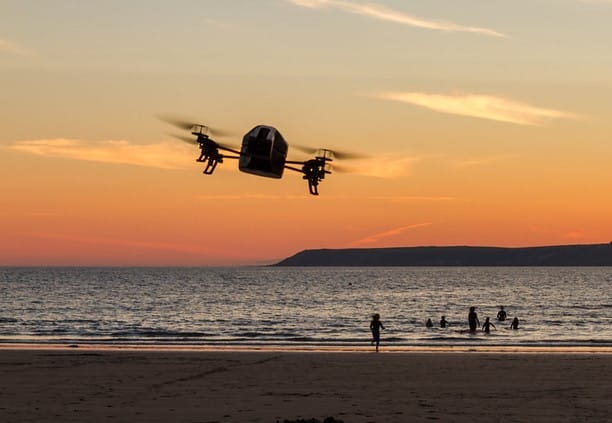
The Oregon Coast supports over one million nesting seabirds and shorebirds, including endangered species like the Snowy Plover. The iconic sight of 60,000 Common Murres on Yaquina Head is one spectacular example of the importance of our coast to nesting birds. At the same time, people love to visit the coast, and visitation is steadily increasing. In recent years recreational drone use has skyrocketed, reflecting a nationwide trend. This in turn has led to increasing disturbances to birds, marine mammals, and other wildlife. Such disturbances have been documented to negatively impact nesting success of many bird species. In one dramatic case in California recently, a drone crash caused an entire colony of 3,000 Elegant Terns to abandon 1,500 active nests. In addition to wildlife impacts, drone usage can negatively impact the peaceful, safe, and private experiences visitors to state parks and the coast seek when exploring and enjoying Oregon’s natural places.

Unfortunately, the process got off to a rocky start as the initial Rules Advisory Committee (RAC) put together by OPRD inexplicably did not include representatives from Oregon conservation organizations, recreational user groups (other than drone users), or Tribal nations, who all have interests affected by the rule. In addition, the RAC did not include representatives from the U.S. Fish and Wildlife Service, which manages the Oregon Coast National Wildlife Refuge. OPRD then belatedly included Bird Alliance of Oregon and Oregon Shores Conservation Coalition on the RAC for the second meeting, but by then the damage was done, with draft rules slanted significantly toward pervasive usage of drones on park lands. After public outcry and a brief but effective campaign, OPRD decided to pause the RAC process and formed a working group to start the process over from scratch.
The working group (which includes Bird Alliance of Oregon) comprises a good balance of conservation, agency, drone, and other recreational stakeholders. This group met last summer several times to develop criteria to decide where drones should be prohibited permanently, seasonally prohibited, or allowed on park lands. We have made progress as part of the working group, and draft criteria currently prohibit drone takeoff and landing in areas that contain state or federally protected species, areas sharing borders with existing protected areas, and where they would pose risk for other uses. Seasonal restrictions would apply in areas where wildlife concentrate for migration, breeding, or wintering, with drones prohibited when wildlife is most vulnerable (e.g., during nesting season). The working group will meet at least one more time to finalize draft criteria. Bird Alliance of Oregon is pushing for the strongest criteria to narrow usage of drones to places where wildlife impacts would be negligible.
The devil will be in the details, though. OPRD staff are developing maps that will delineate these prohibited, seasonally prohibited, and allowed drone use areas based on the criteria. Once the maps are completed (likely late summer or fall), the working group will review them and make adjustments. However, there is currently no formal period that would allow public review of and comment on these drafts. We are currently working with OPRD leadership to allow this critical public engagement. All Oregonians deserve a say in drone usage in their state parks and on the ocean shore. Stay tuned for opportunities to help guide responsible drone usage on state park lands.



